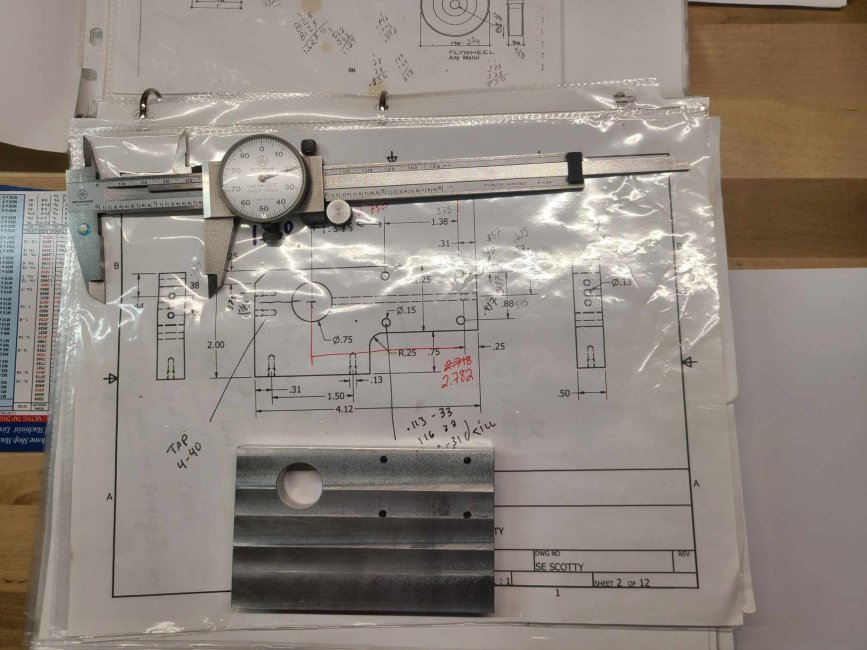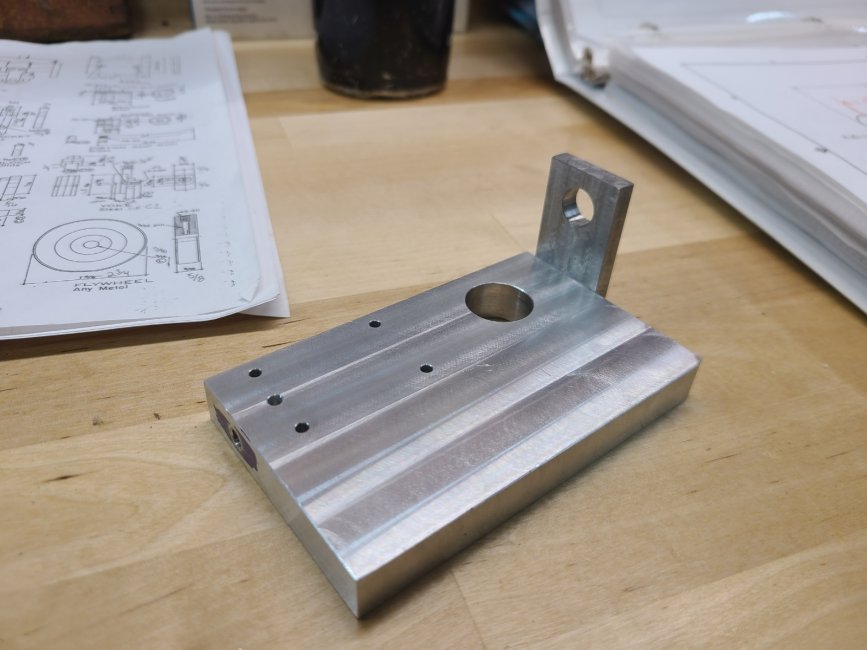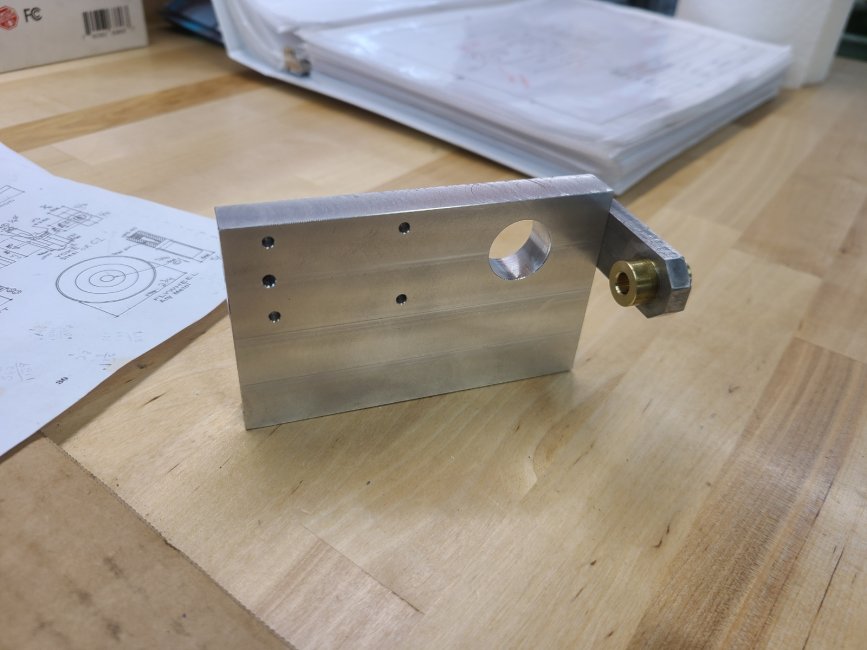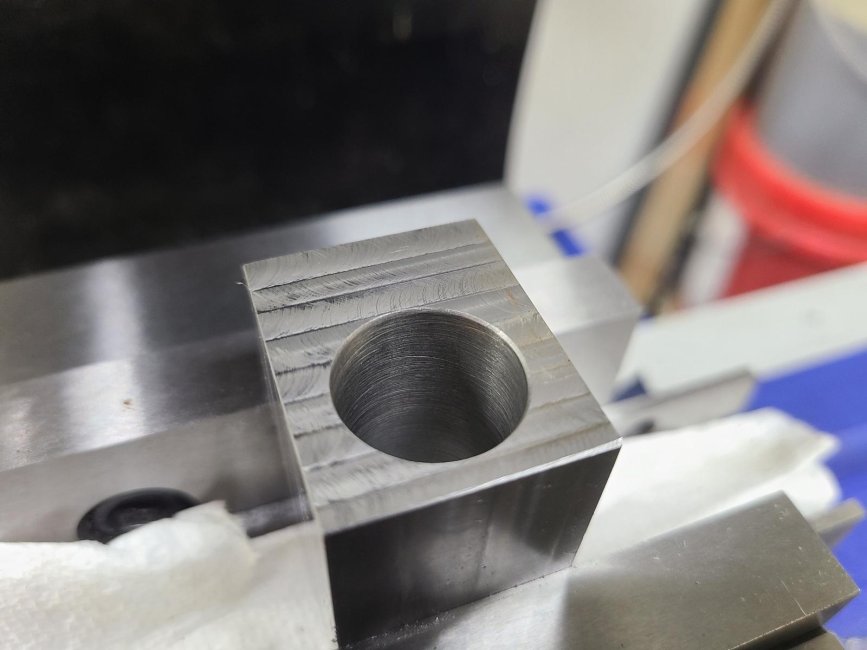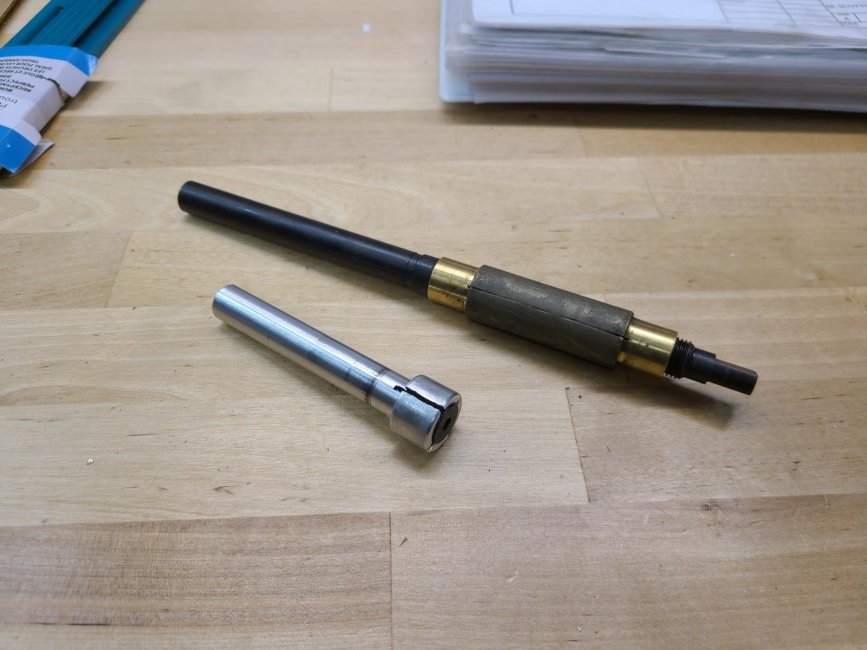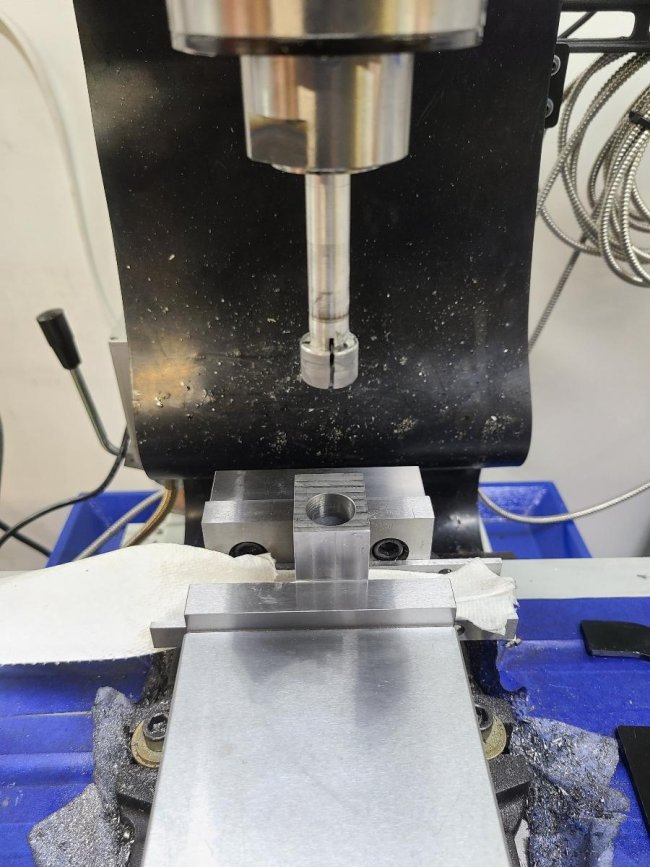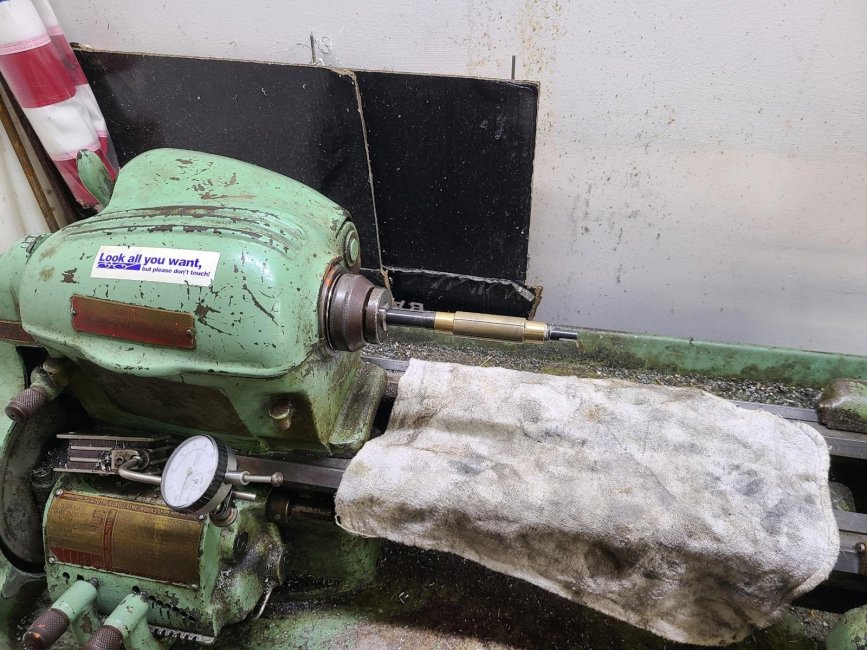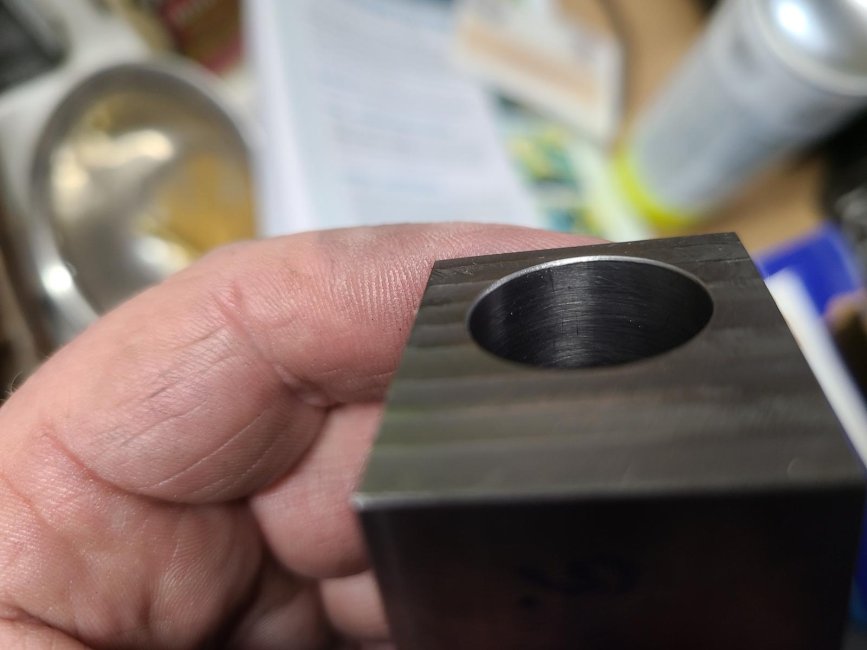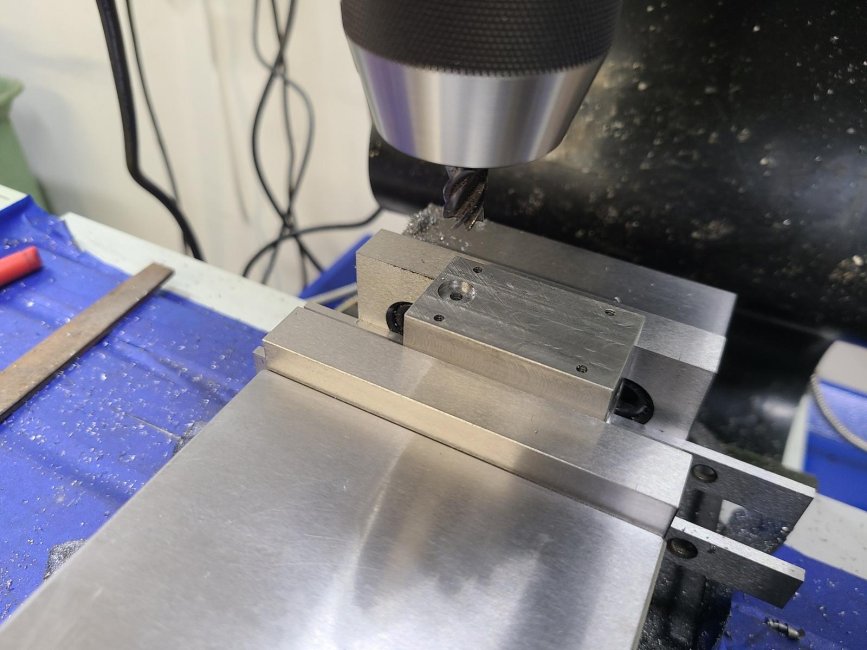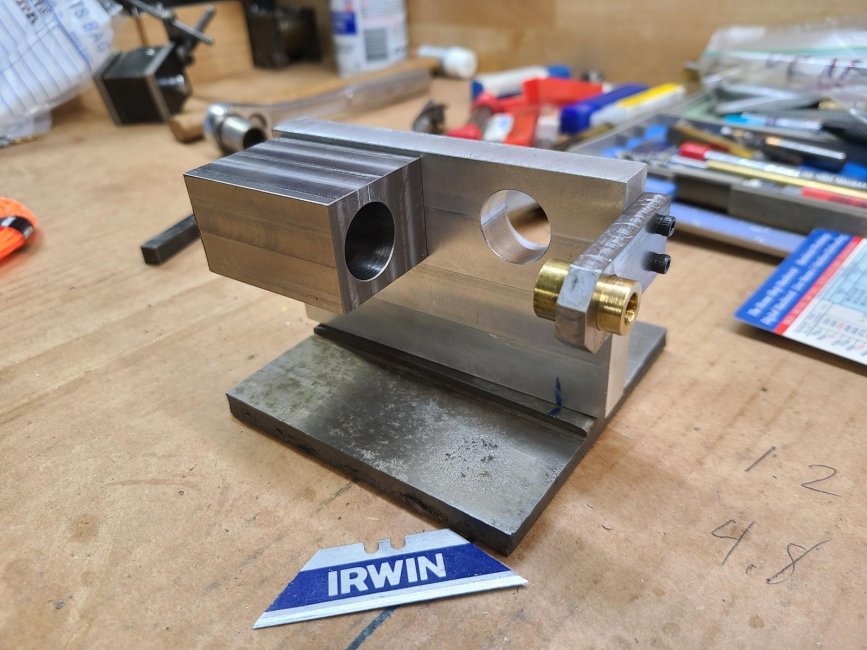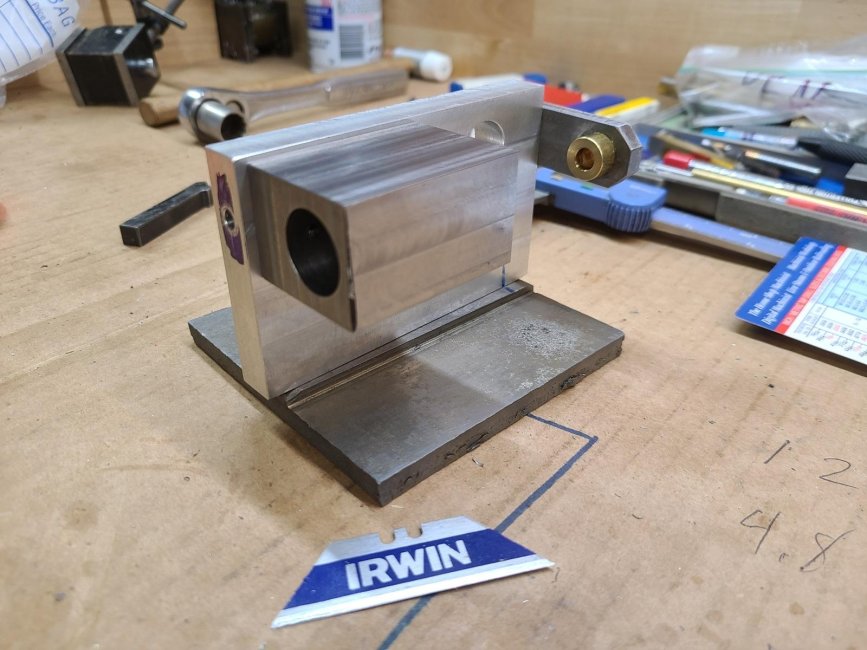I am a member of The Machinist Group of Northeast Indiana , and this year's group project is to build Elmer's "scotty " engine. All the members are going to build this engine.
I invite you to follow along with me. But first some background on Elmer & alterations to the build.
Elmer Verburg was an electrical engineer with a passion for building running model engines. Thru out the 70's & 80's these engines were published in several magazines. Around 1988 Elmer published a book with all of his engine designs & construction notes in it. A hard bound original copy sells for $200 plus dollars. Luckily Elmer said apon his passing, the book was to distributed free among the masses.
The name "scotty" comes from the scotch yoke arrangement at the crank. Simple put a scotch yoke has a pin the slides in a slot, turning rotating motion into linear motion.
Some of the alterations I am doing include scaling the engine up twice sized, that will make the bore ¾ inch x 1 inch stroke.
Here is a YouTube video of Elmer's "scotty " engine ,
I invite you to follow along with me. But first some background on Elmer & alterations to the build.
Elmer Verburg was an electrical engineer with a passion for building running model engines. Thru out the 70's & 80's these engines were published in several magazines. Around 1988 Elmer published a book with all of his engine designs & construction notes in it. A hard bound original copy sells for $200 plus dollars. Luckily Elmer said apon his passing, the book was to distributed free among the masses.
The name "scotty" comes from the scotch yoke arrangement at the crank. Simple put a scotch yoke has a pin the slides in a slot, turning rotating motion into linear motion.
Some of the alterations I am doing include scaling the engine up twice sized, that will make the bore ¾ inch x 1 inch stroke.
Here is a YouTube video of Elmer's "scotty " engine ,



